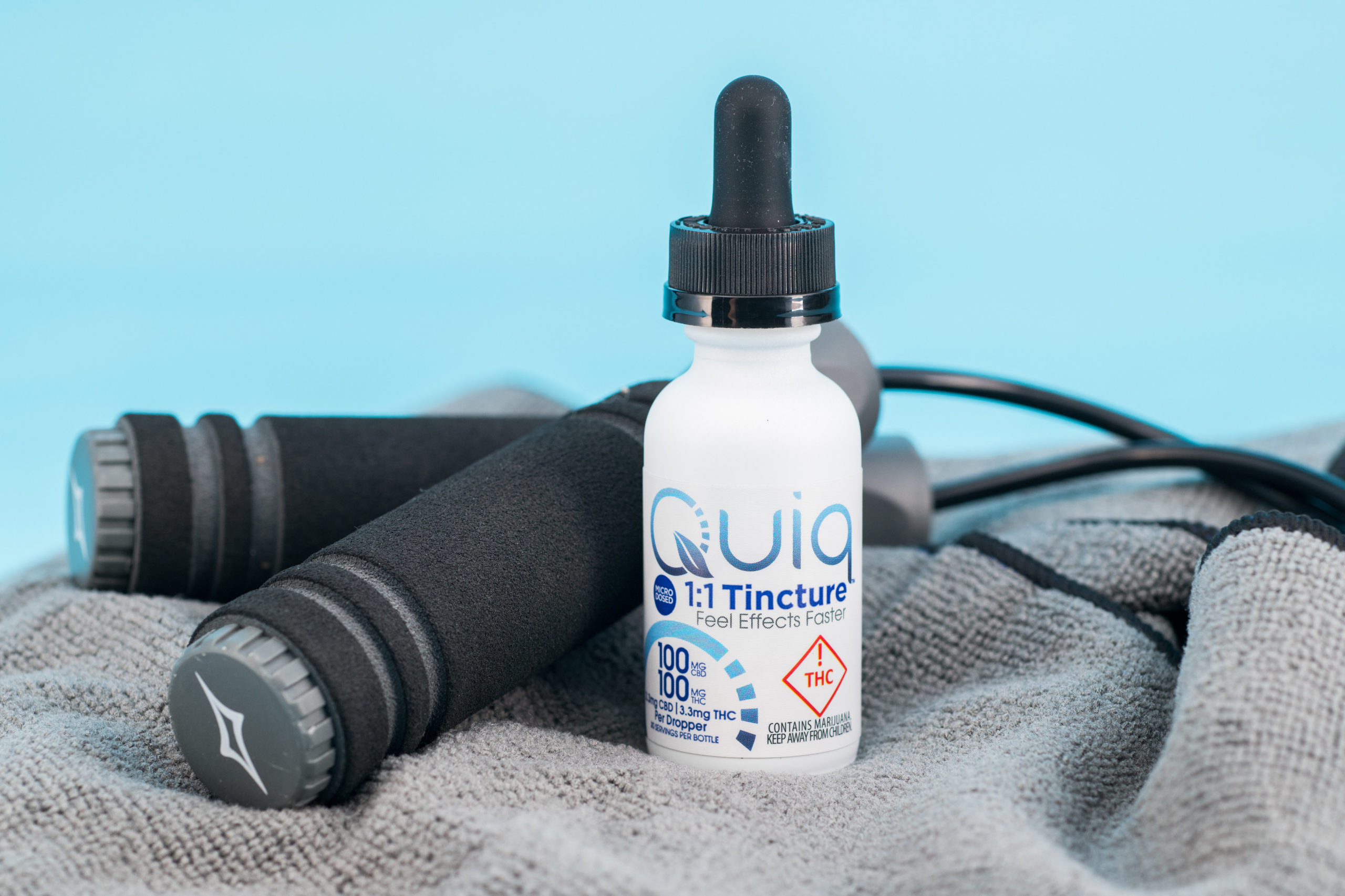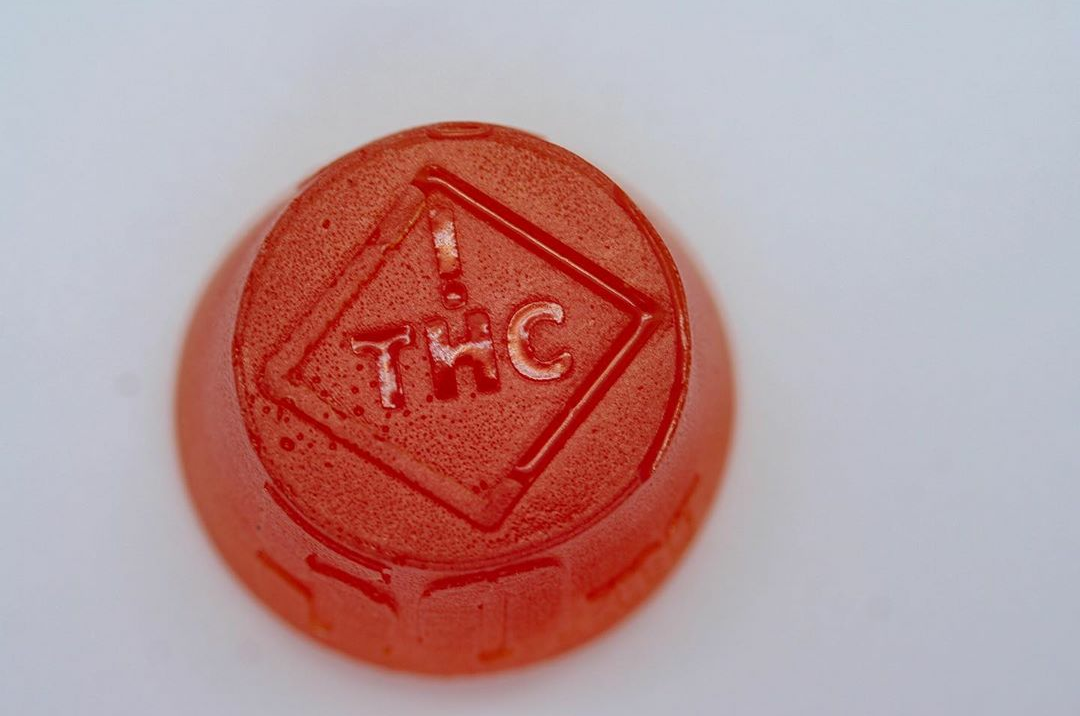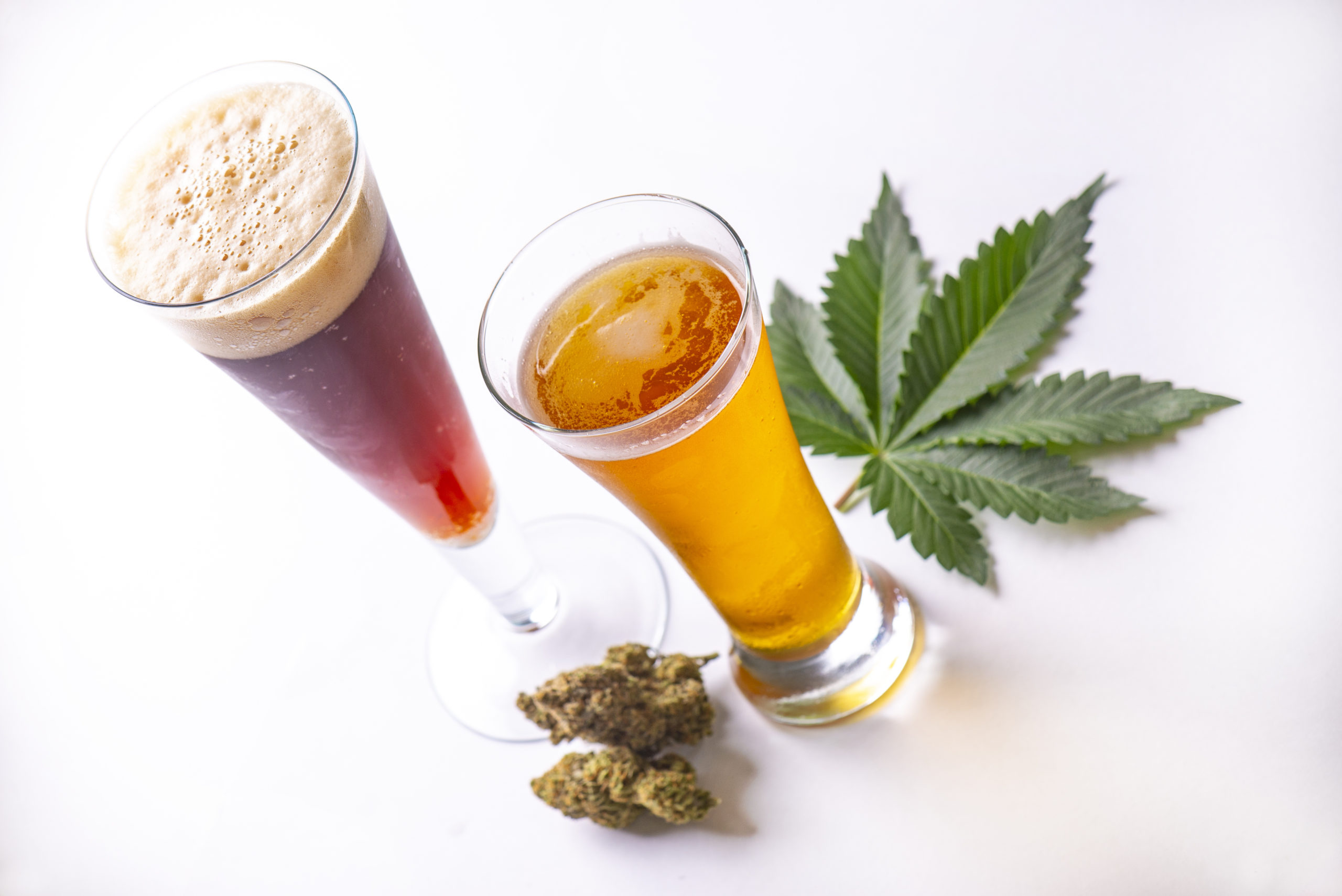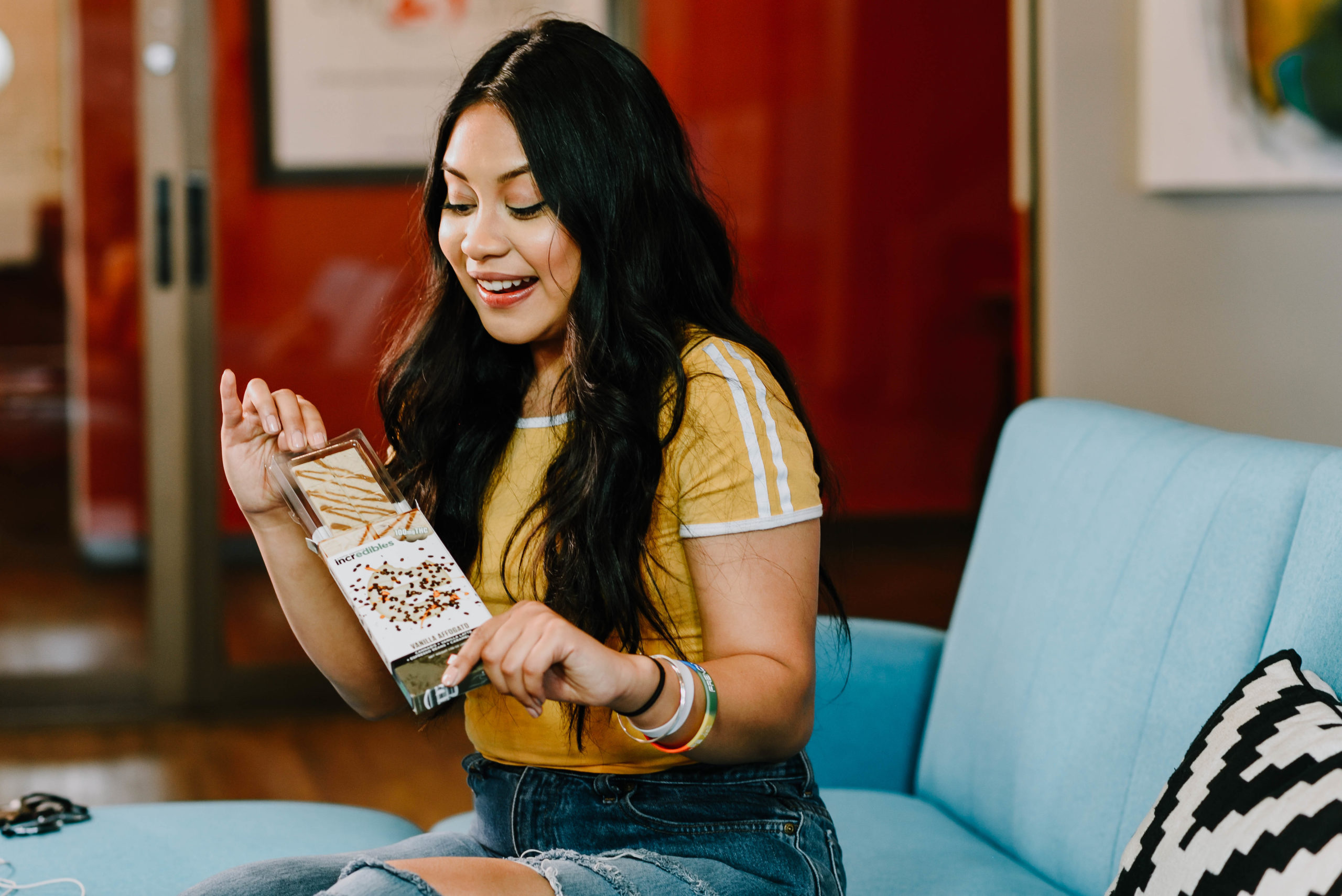Improve Athletic Recovery with Cannabis Edibles and Topicals
Cannabis becomes more mainstream every day as legalization has spread across the country. A multibillion-dollar industry sprang up almost overnight and has grown like … well, like a weed. One major sector of this industry is industrial hemp, quickly gaining popularity when the 2018 Farm Bill legalized the manufacture and sale of CBD-infused products nationwide. People unlikely ever to use cannabis have flocked to try the new array of wellness products, but still, the marijuana sector of the cannabis industry has greater demand. Innovative companies have come up with a wide variety of cannabis-infused products, mostly edibles and topicals, that target symptoms in creative ways. Athletes are one audience that brands often target, especially when it comes to improving athletic recovery with cannabis.

CBD and Athletic Recovery
CBD produces many of the same results as THC, but not that “high” feeling. Athletes tend to prefer it because they want to stay sharp during a workout.
But to say it has no psychoactive properties is not really true – CBD eases stress. It elevates one’s mood which can help team athletes respond positively to stress and anxiety, and to help solitary athletes push through mental blocks and physical plateaus. CBD produces bodily relaxation similar to a mild muscle relaxer, good for recovery and sore muscles.
Perhaps the compound’s most exciting action is its ability to fight excess fat and prevent obesity. In a 2016 study published in Molecular and Cellular Biochemistry, scientists discovered that “CBD encourages the metabolism of existing fat cells [and] prevents the formation of new fat cells.” The study states that more research is required, but the early findings are promising for the future of obesity prevention.
There are a variety of methods to consume CBD, and edibles are one of the most popular product categories. Great for extended workouts and endurance sports, edibles take about 30 minutes to an hour to kick in, and last several hours after that. Conveniently, you’ll likely experience their strongest effect at about the time you’ll be growing tired. Tinctures, on the other hand, are best used just before a workout because they take effect quickly; or use your CBD-infused oil for recovery and mix it into your post-workout protein shake.
CBD topicals are comparable to pain relief creams like Voltaren and Aspercreme, but are often made with more natural ingredients. You put the salve right where it hurts and the medicine will go straight through the skin to the source. Cannabis-infused bath salts are great for soaking after a workout, or right before bed to help you relax and get a good night’s sleep. This will help you heal, improving athletic recovery.
The Benefits of Using THC During Your Workout
While THC produces noticeable psychoactive effects, it offers a host of medical benefits, many of which may support athletic ability and recovery. THC is a vasodilator, which means it widens blood vessels and increases the flow of blood carrying oxygen throughout the body. It can lead to a better pump for weightlifters, and the fast-flowing blood carries more oxygen to the muscles before, during and after workout to keep them fresh, and help them heal.
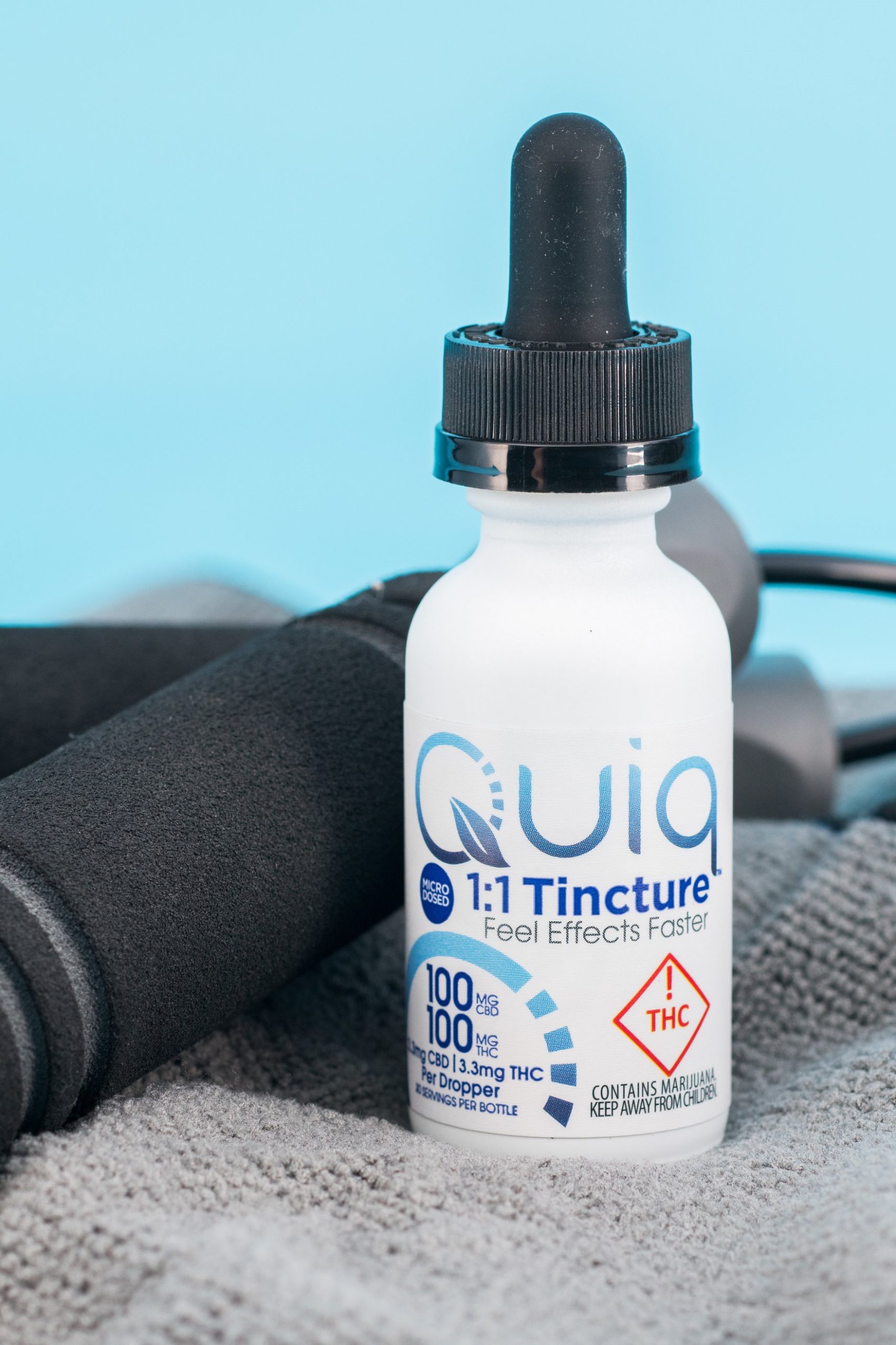
THC is also a bronchodilator, which expands airways, facilitating better, deeper breathing that brings more oxygen into the system, improves stamina and helps aerobic exercisers increase endurance.
THC’s anti-inflammatory properties relieve chronic pain from old injuries, arthritis, and lower back pain that plague weight lifters and older athletes. In higher doses, it encourages falling asleep and staying asleep. Rest is essential in order to recover faster.
Taken in the correct quantity, THC and the right terpenes can create focus, uplifted feelings and energy that will inspire you to get on your bike or pull on the running shoes and get down the road. Not only can cannabis help you get better results in the gym, it can give you the motivation to get up and go.
Don’t forget, THC makes you hungry. If you are serious about your health, get used to treating the munchies with leafy green vegetables, avocados, berries, and yogurt – which make a pretty good smoothie, by the way.
Athletes and Their Success with Cannabis
Wellness gurus and serious athletes have gravitated to cannabis products because they can relieve workout pain, bring on faster recovery, and help improve sleep quality. Could cannabis become an integral part of a healthy lifestyle?
One of the world’s best runners, who uses cannabis daily as part of his training, believes he is using the drug to implement his healthy lifestyle and keep him among the elite runners in the world. Cannabis edibles aid his athletic recovery. Avery Collins of Silverton, Colorado said that cannabis makes his runs more enjoyable. “They’re almost spiritual,” he added.

Avery believes in responsible consumption, and combines edibles, salves and an occasional smoke on his 140-mile a week training routine. He believes cannabis is a safe alternative to hard drugs and booze, and he also found it works with pain relief. Basically, he’s just a guy who loves weed and running, so he does both with abandon.
A trainer, doctor, and cannabis advocate has also found a niche in the use of CBD to help athletes get the most out of their bodies. Dr. Ben Cowin is a 20-year sports medicine veteran who treats professional athletes in his Denver practice and around the world. He said his research with CBD has changed the way he looks at treating athletes, and he’s even helped to formulate a hemp-infused topical for managing pain and inflammation.
“We can offer a safe alternative to pain control thanks to cannabinoids,” he said.
Get The Best Results When Using Cannabis for Athletic Recovery
Many findings indicate that when taken together, the benefits of CBD and THC can serve to intensify each other. If you live in a legalized state, try adding a small dose of THC to a larger dose of CBD. But if you play organized sports, make sure you aren't breaking any league rules by testing positive on a drug test. Also, if you are limited by the legality of marijuana in your state, know that CBD, in itself, can help to relieve pain, reduce inflammation, and improve sleep quality -- all important factors for athletic recovery.
When consuming cannabis products for performance and recovery purposes, be sure to pay attention to your body's response. Everyone is unique and no one size fits all. We advise keeping a journal and recording what applications and doses give you the best results. Be sure to purchase quality, lab-tested products and always remember to consume cannabis responsibly.
Cannabis Overdose: What To Do When You Overdo
Yes, you can overdose if you consume too much cannabis. No, you won’t die from it. You might feel weird and angsty for a few hours but remain calm, follow the steps listed below, and you’ll be just fine. Nothing bad will happen.
Of course, it’s better to avoid consuming too much cannabis in the first place. We’ll show you how to do that, too. Especially with edibles, it’s easy to eat too many of those delicious chocolates, gummy bears, brownies or whatever. Familiarize yourself with the symptoms of a cannabis overdose so that you’ll be able to recognize what’s happening and won’t make embarrassing calls to 911.
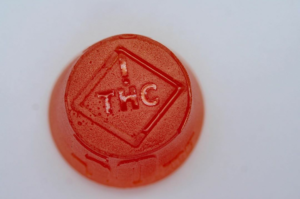 The effects of an overdose are like those of cannabis, only cranked up to 11: anxiety and paranoia; disorientation, dizziness, feeling woozy, heaviness, sweating, loss of coordination and nausea. You may note an increased sensitivity to light, sound, temperature and texture.
The effects of an overdose are like those of cannabis, only cranked up to 11: anxiety and paranoia; disorientation, dizziness, feeling woozy, heaviness, sweating, loss of coordination and nausea. You may note an increased sensitivity to light, sound, temperature and texture.
If you are wearing a scratchy sweater, toss it and get into something comfortable. Adjust the lights and noise. If you’re walking around and bumping into things, go lie down. Do not drive! Your motor skills, judgement and coordination will be impaired.
Another effect of ingesting too much cannabis is sleepiness. Sleeping is your friend. Help it along. See if you can take a nap and wake up on the other side.
What to do when you’ve had too much cannabis
- Don’t panic! Take control of your mind. Keep telling yourself you’re not dying, that the unpleasantness will start to pass in an hour or sooner. In four hours or so, it’ll all be over.
- Your racing heart may frighten you. Be aware that it’ll slow down soon, once the blood-pressure lowering effects of cannabis begin. You can help slow it down with deep breathing.
- Take deep, cleansing breaths. Take each breath all the way down into your belly, then breathe out slowly. If you start to feel sleepy, awesome! Go to sleep.
- Find a quiet, safe place and relax. Call a friend who has experience with cannabis who can either come over and hold your hand or say calming things on the phone.
- DRINK WATER! Marijuana causes dry mouth. Water will fix that, as well as speed up metabolism and cleanse your system. You may want to eat something light. But keep sipping on a glass of cool, clear water.
- Marijuana’s time-dilation effects can make you feel that the effects are lasting forever, so it helps to distract yourself. Watch something soothing on TV or listen to relaxing music. Choose long songs, like jam bands, Mozart’s Jupiter Symphony, Keith Jarrett’s Koln Concert -- anything mellow and long.
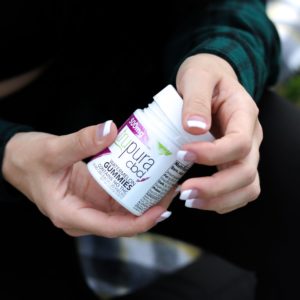 You could try a little CBD or chew on two or three peppercorns to lessen anxiety. Some scientific studies support the vast anecdotal evidence. CBD is a cannabis-derived compound that doesn't produce that “stoned” feeling and can help relieve anxiety. To ensure precise dosage, purchase your CBD products from a reputable company. Be careful: Some CBD products contain THC, which is the last thing you need. Start with a dose of about 20-30 mg of CBD.
You could try a little CBD or chew on two or three peppercorns to lessen anxiety. Some scientific studies support the vast anecdotal evidence. CBD is a cannabis-derived compound that doesn't produce that “stoned” feeling and can help relieve anxiety. To ensure precise dosage, purchase your CBD products from a reputable company. Be careful: Some CBD products contain THC, which is the last thing you need. Start with a dose of about 20-30 mg of CBD.
Black peppercorns or a few sniffs of black pepper may also help alleviate paranoia and anxiety. Try about three peppercorns, chew slowly, keep water handy because pepper is … peppery. Calming effects will likely take about an hour.
Never mix drugs – don’t take valium to calm your racing heart, don’t take stimulants to wake up, and don’t drink alcohol or even caffeine. You’ll just have more forces pulling your body in different directions instead of one. You can manage the situation yourself with patience and a little help from trusted friends.
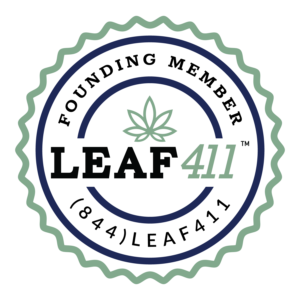 If all else fails and you or your friends believe that you need professional help, call Poison Control at 1-800-222-1222. You can also get help online through a chat function. Have a list of other medications you are taking.
If all else fails and you or your friends believe that you need professional help, call Poison Control at 1-800-222-1222. You can also get help online through a chat function. Have a list of other medications you are taking.
Also check out Leaf411, a free nurse hotline that operates Monday-Friday from 9 a.m. to 7 p.m. Mountain Standard Time. The nurses are available on Saturday and Sunday by request. It’s a great first call for information and advice on all kinds of cannabis products, affiliated businesses, clinicians and support groups.
Don’t give up on cannabis after one bad experience
Cannabis is a safe, useful drug when it’s used responsibly. But like any drug, you must respect it. Educate yourself, learn your tolerances, and use it wisely for a pleasant, enlightening experience. Connoisseurs of fine wine don’t guzzle the whole bottle. Think if it like that. Go slow and enjoy the experience.
When most new users overdose, it’s because edible cannabis takes about two hours to hit you. When it does, it’ll be a different feeling from what you’re used to if you’ve only ever smoked or vaped. Smoking and eating cannabis release two different kinds of THC into your blood. When ingested, THC converts to 11-hydroxy-THC which causes a stronger hallucinatory and bodily effect.
Many experienced cannabis users have had one bad experience, but seldom do they report a second. The worst part of a bad experience is that it takes you by surprise. Once you know what to expect – and how to avoid it -- you can adjust your intake. It takes a little trial and error.
The old saying start off “low and slow” is great advice. Begin with a tiny dose of about 2.5 mg, wait two hours and see what that does. After a day or two, up the dose to 5 mg. Then to 10 mg. Every person’s reaction to cannabis is different. Some have higher tolerance than others. Find the dose that suits your body.
Help to ensure a pleasant experience by purchasing edibles from a licensed dispensary. These products go through lab testing to ensure consistent doses thanks to industry innovators who advocated for having this standard. Always buy from an experienced, trustworthy company that prioritizes customers’ safety and positive experiences.
10 Ways Cannabis Is Safer Than Alcohol
New findings from cannabis research hit the press often these days, and the results typically confirm the therapeutic benefits of cannabis. Now that most states have legalized cannabis or are moving in that direction, more and more people have the freedom to choose between alcohol and cannabis consumption. There’s really not much of an argument as to which is safer, especially when consumed in large amounts, yet it’s helpful to know how these two substances compare in this regard. Read on to learn 10 ways cannabis is safer than alcohol.
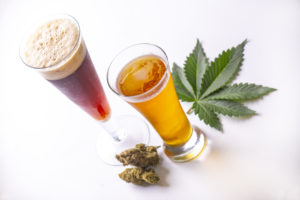
10. Cannabis is prescribed to help people. Doctors are prescribing medical marijuana for its therapeutic benefits that help all sorts of ailments such as chronic pain, loss of appetite, PTSD, autism, and autoimmune disorders, to name a few. When was the last time you recall a doctor writing a prescription for vodka or a few beers? Exactly.
9. Cannabis does not increase the rate of obesity. Obesity is an epidemic in the United States. Alcohol contains empty calories and lacks any nutritional value, so it’s no surprise that research has found heavy use leads to an increase in adipose tissue, therefore to an increase in obesity.
8. Cannabis can help depression and anxiety. Alcohol is known to the central nervous system as a chemical depressant, yet many depressed and anxious people reach for alcohol to help themselves feel better in the moment. This only worsens the condition over time, potentially leading to suicide. While the overuse of cannabis can be an exacerbator, when used moderately it has been found to provide relief.
7. Beneficial effect on brain cell growth. Studies have shown that cannabis use stimulates neurogenesis, the production of new brain cells. This is the opposite effect that alcohol has on the brain and is the opposite point of view the public has been trained to think.
6. Cannabis is less addictive. Alcohol abuse and alcoholism is not just a psychological dependence, but also an actual biological addiction. Withdrawal symptoms can be lethal. There are approximately 2.1 million members worldwide in Alcoholics Anonymous, an organization that helps save many from alcohol addiction and abuse. This speaks volumes. There has yet to be any science that shows cannabis is an addictive substance.
 5. Cannabis use is not associated with aggressive behavior, violence, or violent crimes. According to a study published on domestic abuse, alcohol consumption is associated with significant increases in the daily likelihood of physical aggression, especially male-to-female aggression. The effects of alcohol abuse on human aggression and violence are concluded from statistics involving people who were at various levels of intoxication at the time of the aggressive or violent activity. Violent crimes such as murder, rape, and assaults are pervasive in individuals with excessive alcohol use that are diagnosed as alcoholics, as well as those that do not fulfill the psychiatric criteria of an alcoholic.
5. Cannabis use is not associated with aggressive behavior, violence, or violent crimes. According to a study published on domestic abuse, alcohol consumption is associated with significant increases in the daily likelihood of physical aggression, especially male-to-female aggression. The effects of alcohol abuse on human aggression and violence are concluded from statistics involving people who were at various levels of intoxication at the time of the aggressive or violent activity. Violent crimes such as murder, rape, and assaults are pervasive in individuals with excessive alcohol use that are diagnosed as alcoholics, as well as those that do not fulfill the psychiatric criteria of an alcoholic.
4. There is much less risk of injury. The harmful use of alcohol is a causal factor in more than 200 disease and injury conditions. Drinking alcohol impairs both physical and mental abilities while decreasing inhibitions. It is associated with a risk of developing health problems such as mental and behavioral disorders, including alcohol dependence, major diseases such as liver disease, some cancers and cardiovascular diseases, as well as injuries resulting from violence and traffic accidents and collisions. Sure, there are people who may drive high and cause an accident, but drunk drivers are far more common.
3. Cannabis use is not linked to cancer. Conversely, it has been shown to treat cancer and have antitumor effects. What about lung cancer, you ask? Researchers have yet to prove either way if cannabis causes lung cancer. Any smoke that is inhaled contains toxins and other carcinogens. Carcinogens are substances that are known to cause cancer, and these substances are produced whenever something burns. So, when it comes to smoking cannabis, the potential for lung damage does exist. Alcohol, on the other hand, increases the risk of developing cancer.
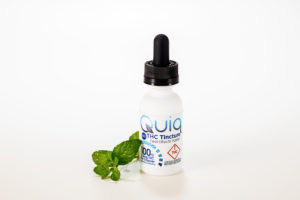 2. There is no risk of lethal overdose. As with any substance, you can absolutely overdo it, but death from a high dose of cannabis isn’t possible as it is with alcohol and many other substances. There haven’t been any reported deaths resulting solely from cannabis use. The primary psychoactive compound of the cannabis plant, THC, has an extremely low toxicity, posing no threat of death. It’s important to note that cannabinoids and other molecules in cannabis can affect the metabolism of pharmaceutical drugs, which can lead to drug toxicities by these medications within the body. Here’s a list of medications that are known to interact with cannabis.
2. There is no risk of lethal overdose. As with any substance, you can absolutely overdo it, but death from a high dose of cannabis isn’t possible as it is with alcohol and many other substances. There haven’t been any reported deaths resulting solely from cannabis use. The primary psychoactive compound of the cannabis plant, THC, has an extremely low toxicity, posing no threat of death. It’s important to note that cannabinoids and other molecules in cannabis can affect the metabolism of pharmaceutical drugs, which can lead to drug toxicities by these medications within the body. Here’s a list of medications that are known to interact with cannabis.
1. Death toll from cannabis is zero. Death toll is one of the biggest tell-tale indicators of danger. According to the WHO, there are 3 million alcohol-related deaths annually worldwide, this is 5.3% of ALL deaths. Not only that, let’s look at binge drinking and college students. Recent statistics from the National Institute on Alcohol Abuse and Alcoholism (NIAAA) indicate that each year drinking by college students contributes to an estimated 1,519 student deaths, 696,000 assaults by students who had been drinking, and 97,000 cases of sexual assault and date rape.
As you can see, cannabis is far less harmful than alcohol, plus it contains a range of beneficial properties. Any intoxicant carries with it the potential to be abused and the old adage, everything in moderation, is just as relevant here. For most people, modest use of cannabis or alcohol are both pretty safe. Yet overall, history, data, and subjective experience supports cannabis as the safer of the two. Do yourself a favor: to protect your liver and your lungs, consider edibles the next time you're shopping at a dispensary.
Everything You Need To Know To Safely Consume Cannabis
Cannabis products can work wonders for your mental and physical wellbeing; but overconsumption can cause some uncomfortable effects, like paranoia and anxiety. However, those circumstances can be easily avoided by being an educated user. Here's everything you need to know for safe consumption.
 First things first, let’s start with the stars of the show. The first is tetrahydrocannabinol, better known as THC, the psychoactive component responsible for the high. The greater the number of milligrams, the stronger the dose. A microdose is typically considered to be 2.5mg, and while this can be a bit much for some people, it may be an inconsequential amount to others. The second star is cannabidiol, CBD. When CBD is part of the show, it acts to subdue some of the psychoactive effects of THC, so an equal ratio of THC to CBD typically results in a smooth and more balanced experience. Consuming CBD on its own does not induce a “high”, rather most people feel calm and relaxed in the body with very little effect on the mental faculties.
First things first, let’s start with the stars of the show. The first is tetrahydrocannabinol, better known as THC, the psychoactive component responsible for the high. The greater the number of milligrams, the stronger the dose. A microdose is typically considered to be 2.5mg, and while this can be a bit much for some people, it may be an inconsequential amount to others. The second star is cannabidiol, CBD. When CBD is part of the show, it acts to subdue some of the psychoactive effects of THC, so an equal ratio of THC to CBD typically results in a smooth and more balanced experience. Consuming CBD on its own does not induce a “high”, rather most people feel calm and relaxed in the body with very little effect on the mental faculties.
Now it’s helpful to get clear on why you are consuming cannabis so you can choose the right form and method. Are you looking to alleviate a physical symptom that creates chronic pain or disability in your body? Or to sleep better or ease mental/physical stress such as tension or anxiety? Perhaps to feel a heightened connection with your spiritual nature? Or to simply elevate your experience of life? There are many reasons to consume and depending on your why, you may prefer Cannabis sativa or Cannabis indica, or a hybrid of both. Leafly does a great job of explaining the differences.
Now that you’re clear on your why, let’s talk about the what and how much. Cannabis is a substance in a league of its own, and affects everyone differently depending upon aspects such as the strain, the growing conditions of the plant, the delivery method, the overall physical makeup of the person consuming it, and the dose. A dose is the amount of the active constituents in a given product to be taken at one time, such as THC and/or CBD. Since each person will have a unique response, it’s important to spend some time to figure this out for yourself - no one can tell you with certainty how you will feel. Here’s a great resource for important general guidelines to best determine what dose and method to start with to safely consume.
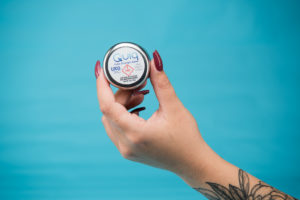 Below are the primary consumption methods, as well as some considerations to be aware of for each.
Below are the primary consumption methods, as well as some considerations to be aware of for each.
• Edibles (chocolates, gummies, tinctures, pills/capsules, full-spectrum oil, sprays): Edibles typically kick in between 45 and 60 minutes, sometimes up to 90 minutes after ingestion and last up to three to four hours, depending on the dose size and whether the stomach has food in it. Ideal for sustained effects, but know your dosage for safe consumption.
• Inhalation (vaping, dabbing, and smoking cannabis): Initial effect is within minutes, and peak effect in 20 to 30 minutes. The psychoactive effects diminish within 2 to 3 hours. Inhalation can be irritating to the lungs, but if you’re looking for a quick onset, this is an ideal option.
• Topicals (creams, salves, patches): These are absorbed through the skin and are ideal for localized issues. They are typically used to treat pain and are not ideal if you’re simply desiring to feel high. Patches release the dose over an extended period of time.
• Suppository (rectal, vaginal): Yes, you heard right! This consumption method is absorbed internally, not systemically, and has been reported not to cause intoxication. Learn more about suppositories for safe consumption here.
A rule of thumb for cannabis consumption is to “start low, go slow, then wait”. What this means is to consume a small amount at first in order to gauge your tolerance, then allow enough time to pass, 60-90 minutes, to see how you feel before taking an additional dose. Here are a couple of hacks to keep in your back pocket in case you accidentally consume too much.
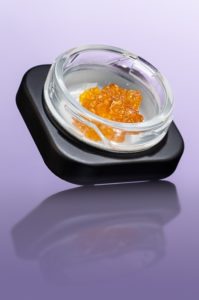 First, CBD has been known to attenuate the effects of THC (try a high-quality, reputable brand such as trupura CBD). Second, as strange as it sounds, suck on a black peppercorn. According to Weedmaps, in a 2011 review published by the “British Journal of Pharmacology,” researchers found that terpenes such as beta-caryophyllene, found in high amounts in peppercorn, tend to create a calming effect via the endocannabinoid system. Check out Safe Cannabis Use for more information on delivery methods.
First, CBD has been known to attenuate the effects of THC (try a high-quality, reputable brand such as trupura CBD). Second, as strange as it sounds, suck on a black peppercorn. According to Weedmaps, in a 2011 review published by the “British Journal of Pharmacology,” researchers found that terpenes such as beta-caryophyllene, found in high amounts in peppercorn, tend to create a calming effect via the endocannabinoid system. Check out Safe Cannabis Use for more information on delivery methods.
Also, it is less common, but some people lack the necessary enzyme in their liver to process THC when ingested through edibles. After being digested by the stomach, a more potent form of THC, 11-hydroxy-THC, which is a metabolic byproduct, is created as the THC is processed by the liver and GI tract. You’ll know you are one of these people lacking the enzyme to convert the THC to 11-hydroxy-THC if no matter how big the dose or how long you wait, you feel nothing. In this case, you’ll likely favor an inhalation method.
One final note to consider is instead of making homemade edibles, choose professionally-made, lab-tested edibles so you know how many milligrams you've consumed. Nearly all homemade edibles have an uneven distribution of cannabis throughout, so you truly will not know how much you’re consuming. It makes a BIG difference.
**Medical marijuana and cannabis products are not regulated by the United States Food and Drug Administration at this time. If you are pregnant or nursing, please visit the Centers for Disease Control and Prevention to understand the risks of consuming cannabis.

